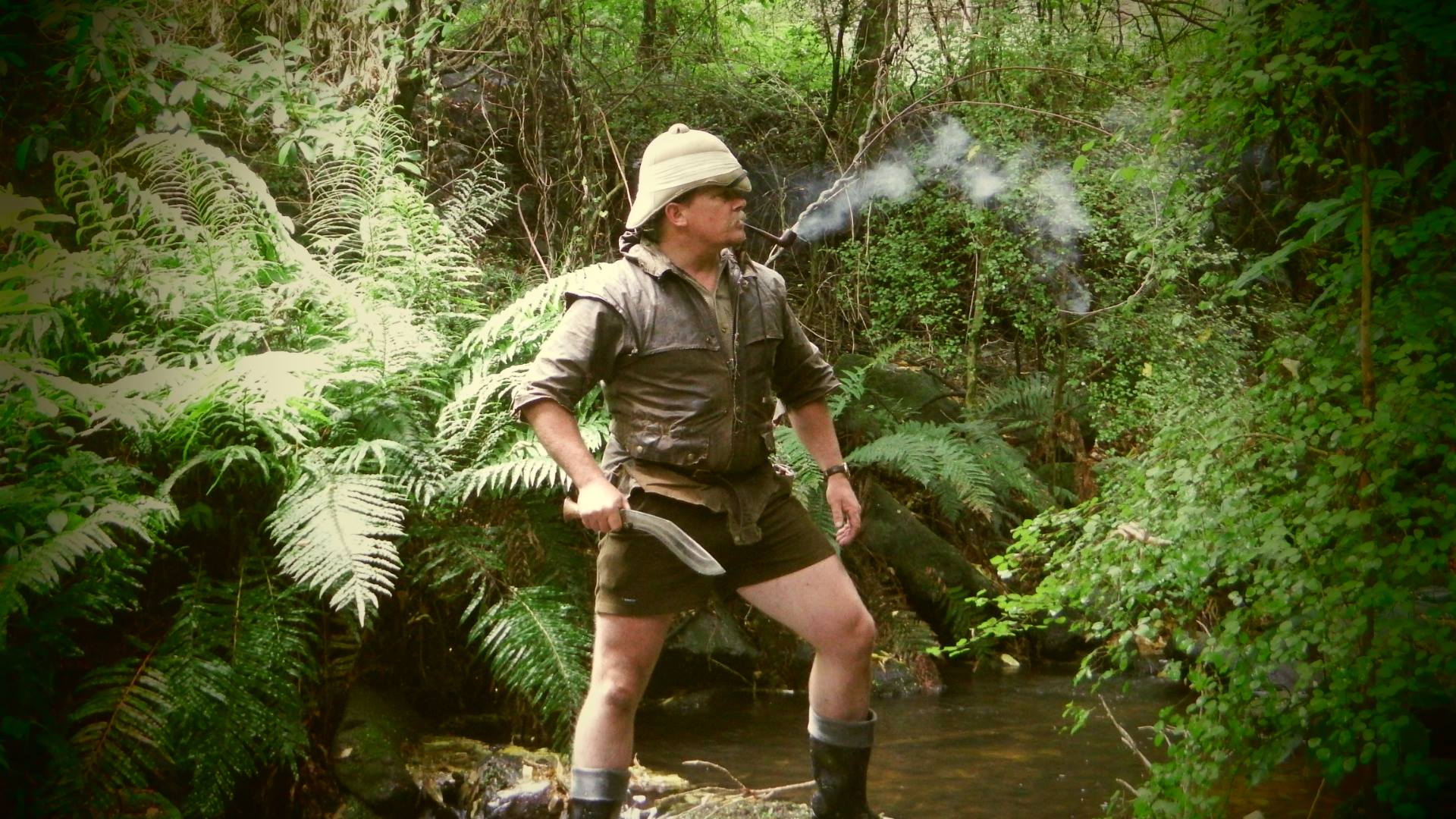Having had decades of traditional travels involving everything from 6 solo months in the Kahurangi wilderness to spear hunting pigs in the highland jungles of Taiwan with the Rukai tribe, Dr. Leavingsoon’s first post offers us advice on Cutting tools for the jungly types; Machete or Kukhri?
I’ll chuck some in here for general viewing for those wishing to ask ‘Aunty’ on what to use for which occasions and how.
If you’re cutting your own trail, which is better? The traditional Machete/Golok or the Nepalese Kukhri?!
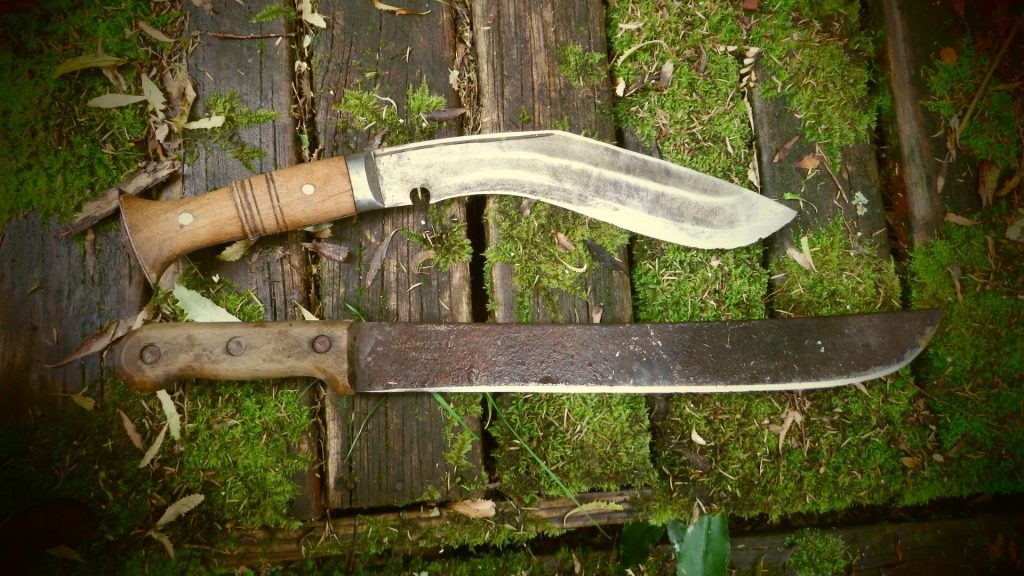
The answer is totally dependent on your kind of jungle!
In lighter environments, where the sunshine gets down to the lower canopy, broadleafed plants flourish and, in their frantic struggles to get to the light, their branches are thin and massed. In these situations a free-swinging machete/golok is best as the thin blade can make short work of any obstacle.
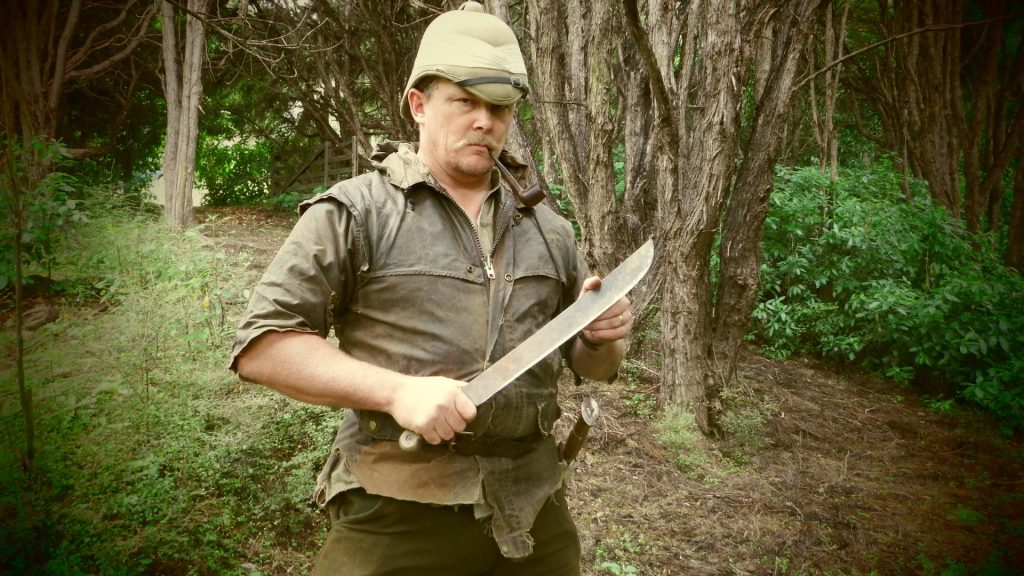
Machete
A kukhri is a much heavier tool designed for combat; the Ghurkali are well-known for their “hilarity” whilst beheading their enemies, as much as their love of the football match that breaks out soon afterwards – hence it is best used in thick jungle where the light barely peeks through and where more established and thicker boughs and trunks are encountered.
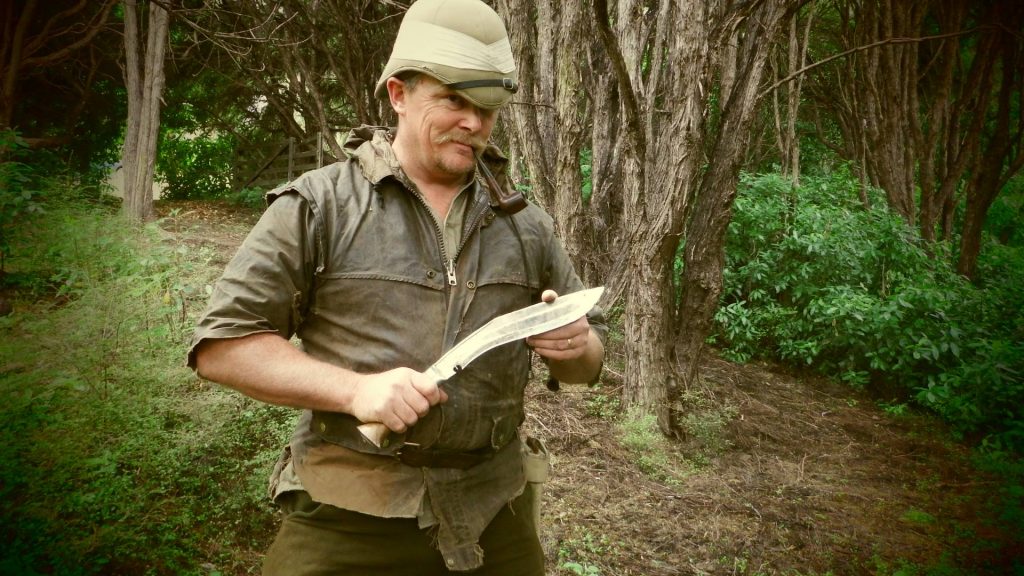
Kukhri
The correct method of holding a kukhri is the same as for the downward chop of a machete/golok. A kukhri should never be used in the upswing as the tool is far more difficult to control. Note the placement of the thumb to lock the tool in place.
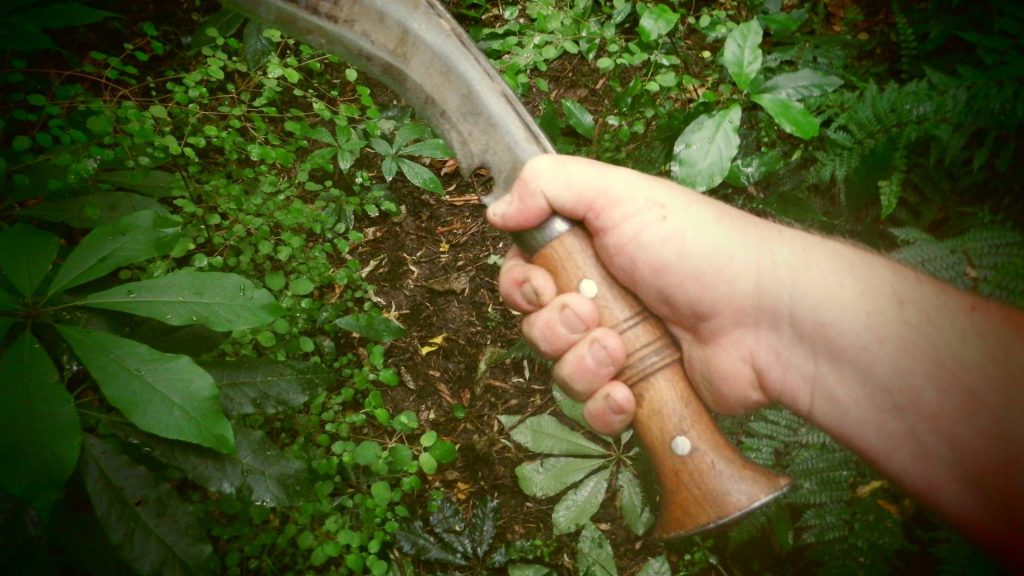
Holding a kukhri
A kukri is used to the side of the body, never across. It is thrust downward at a narrow angle with the right leg kept to your rear to avoid the occasion of casual amputation. Again, a puggaree is exceptionally useful should things go awry.
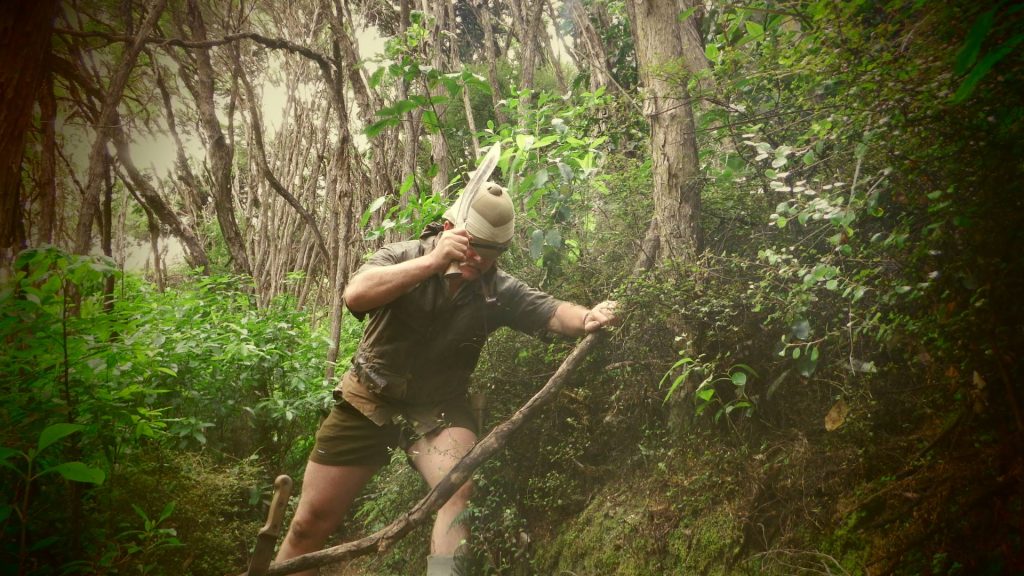
Avoid casual amputation
Hence, each tool has its place when you are pushing across thick country. I frequently carry both, but only when traveling light.
The kukhri’s usefulness comes when constructing shelters and other constructions, such as this fireplace tripod for hanging the billy.
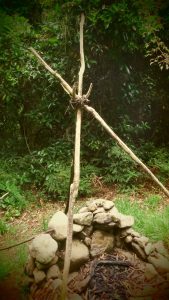
It is a fantastic splitter as well – here we see the machete/golok being used in this role with a thick branch hammering it in from above. The blade is thin and can snap if you’re not careful.
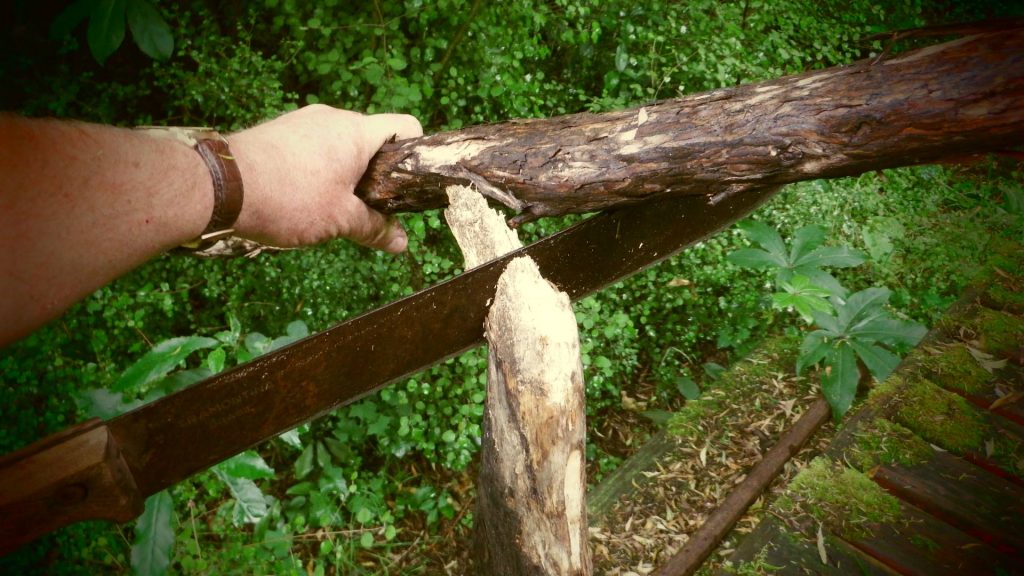
The blade is thin and can snap if you’re not careful.
Here we see the thicker blade of the kukhri in the same chop; note how it has traveled deeper into the wood. You can really go bananas with that wooden hammer without fear of harming the blade!
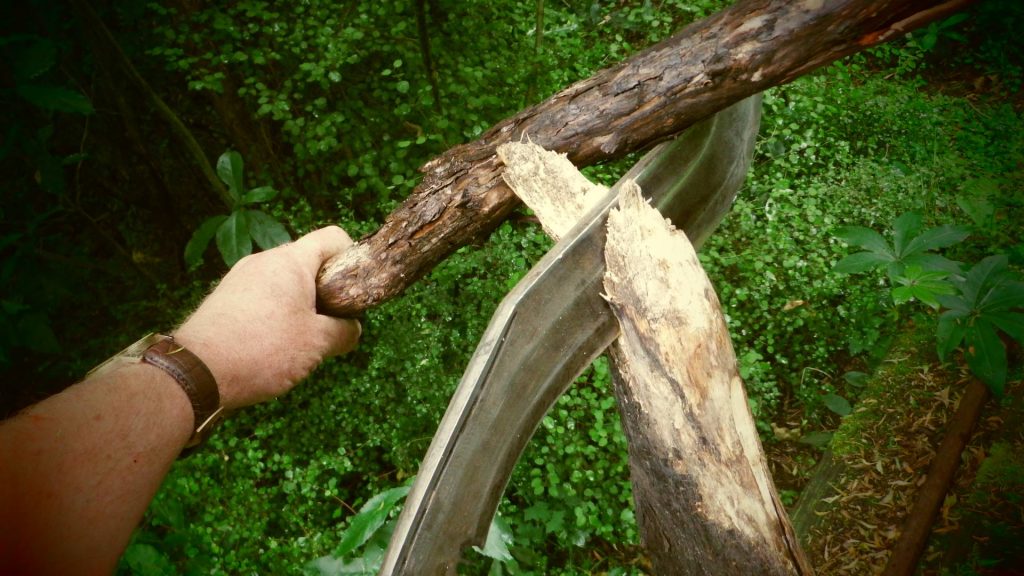
The kukhri in the same chop.
So in short, the machete is good for clearing established tracks or light bush as in this shot of our bush block track successfully trimmed today.
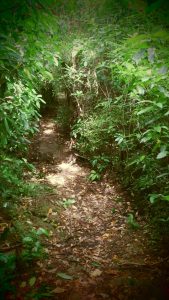
The machete is good for clearing.
The kukhri is for heavier work, such as this series of steps hacked into the clay a few months back.
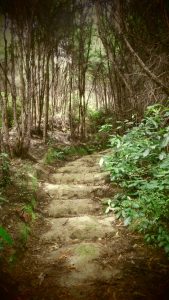
Steps hacked into the clay.
But nevertheless, no matter which you choose, there is nothing quite so effective in showing you mean business as the distinctive curve of a good kukhri. Ahoya Gurkhali!!
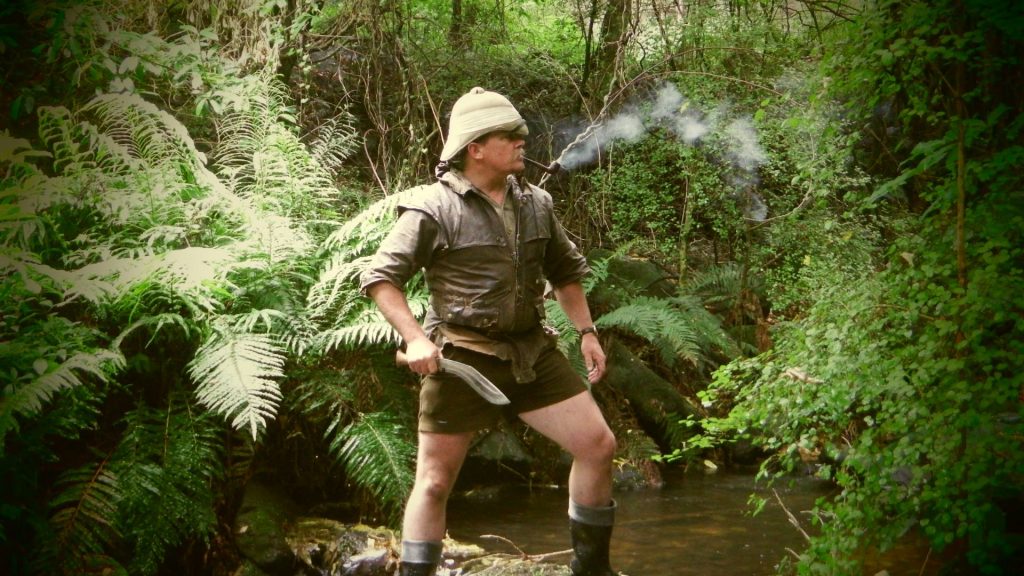
Ahoya Gurkhali!!
For the Taiwan hunt I was using the odd horizontal machete and wooden scabbard used by the Rukai. Note the Solar Topee as opposed to my usual Foreign Service Helmet [cavalry]. More on the appropriate uses and environments of pith helmets in a later post.
Dry socks, Adventurers.
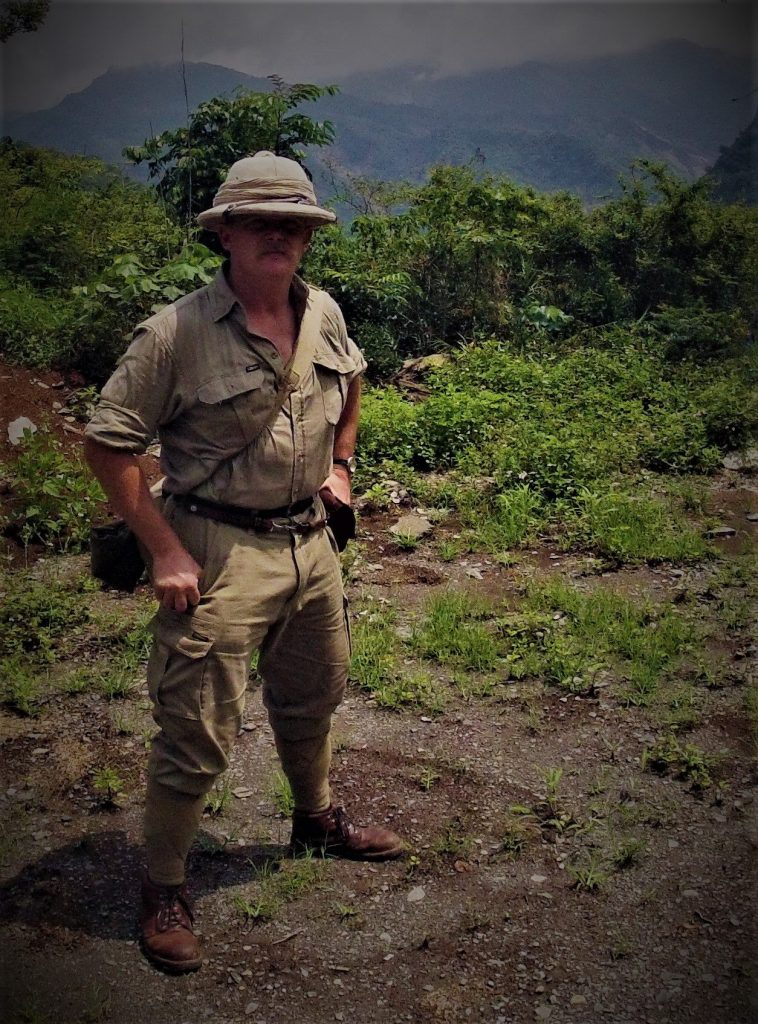
-Bernie Shapiro, aka Dr.Leavingsoon.
